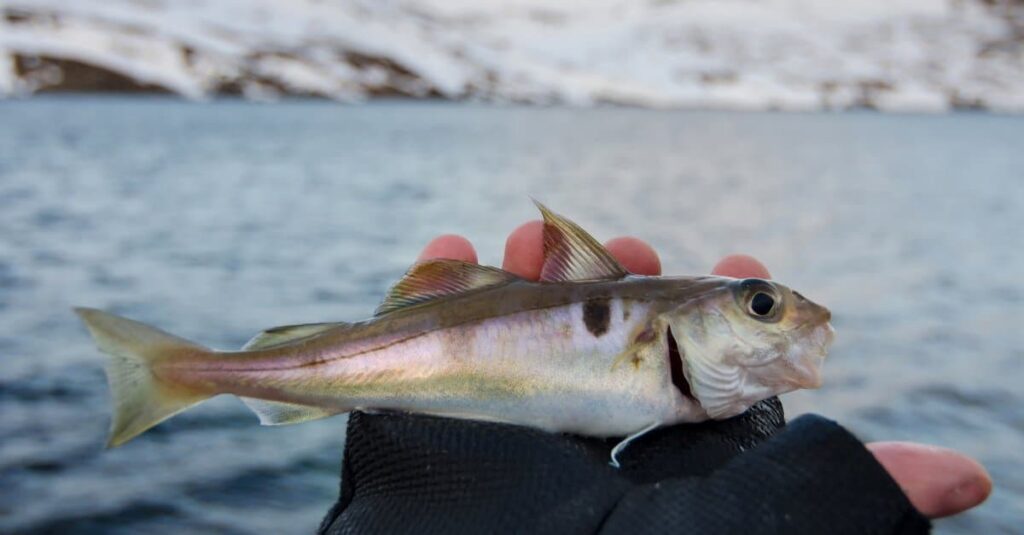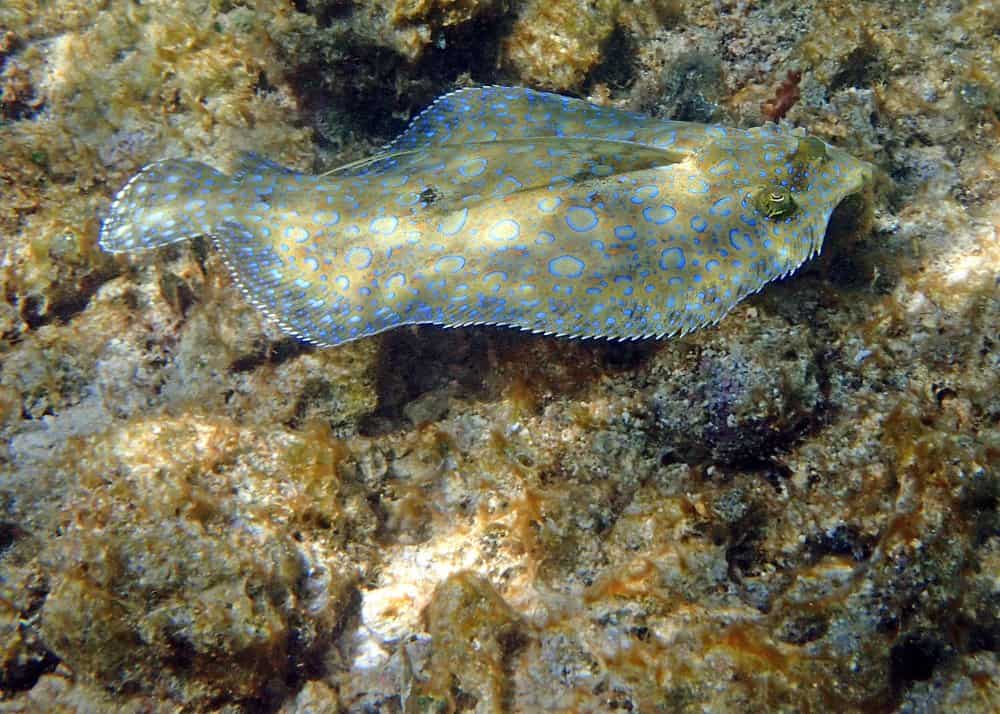We all know that haddocks and flounders are both groundfish species and are considered types of whitefish, yet they have very distinct features that can help you differentiate them. The haddock is from the family of true codfish called Gadidae. The flounder comes from Paralichthyidae, a family of large-tooth flounders and one of the four flatfish families found in the Gulf of Mexico.
Today, we will learn how to compare the two groundfish species and differentiate them according to their distinctive features.
Comparing Haddock vs. Flounder
The Key Differences Between Haddocks and Flounders
To help us differentiate haddocks and flounders, let’s take a look at some key features – appearance, size, diet, distribution, predators, reproduction, and lifespan. Examining all these key features will help us grasp their differences.
Haddock vs. Flounder: Appearance

Solodov Aleksei/Shutterstock.com
We can easily tell the haddock and flounder apart by analyzing their physical appearance. The two whitefish species have distinct features, which can help you tell them apart.
The haddock is easily recognized by its black lateral line running along its white side. It has three dorsal fins, two anal fins, a white belly, and a distinct mark called the “Devil’s thumbprint,” which is a dark blotch above its pectoral fin.
On the other hand, besides its distinctive flat body suited for bottom-dwelling, the flounder has an interesting body structure. It is known for its ability to undergo a process called transmutation, meaning that it completely changes its body form by the time it reaches adulthood. The flounder can be brown, orange, green, or blue. It has a regular fish body at birth and will develop into a round flatfish by maturity. It also can change the positioning of its eyes.
Haddock vs. Flounder: Size

Piotr Wawrzyniuk/Shutterstock.com
Haddocks and flounders have approximately the same sizes but still have minor differences. Still, determining their dissimilarities is one of the easiest ways to tell the two fish apart.
Haddocks have a total length of 12 to 36 inches, weighing from 2 to 40 pounds (0.9 to 18.14 kg) by the time they reach adulthood. They rapidly grow into adult sizes, and it may take up to four years to achieve full sexual maturity.
Flounders weigh up to 22 pounds. They have a minimum length of 8.7 inches and can grow up to 23.6 inches. However, they have no maximum length, so they can still grow into a larger size than the average.
Haddock vs. Flounder: Diet

CT Johnson/Shutterstock.com
Haddocks’ and flounders’ diets are slightly different. They hunt for their prey around the ocean floor, such as slow-moving invertebrates or smaller fish.
Haddocks mainly consume worms, sea stars, sea urchins, mollusks, crustaceans, smaller fish, and fish eggs, while flounders are nocturnal carnivores that feed mostly on fish spawn, crustaceans, polychaetes, and small fish. Larger flounders may include shrimp and crabs in their diet.
Haddock vs. Flounder: Distribution
The two fish can be found in different areas. Haddocks are mostly found on both sides of the North Atlantic. They can be seen from Newfoundland to Cape May and New Jersey but are most abundant in the Gulf of Maine and on Georges Bank.
Meanwhile, flounders occupy the tropical and temperate waters in Europe, North America, Africa, and Asia.
Haddock vs. Flounder: Predators
Both fish are preyed upon by other animals, usually larger than them. Haddocks are preyed on by animals such as the spiny dogfish, skate, cod, halibut, monkfish, and grey seal. Flounders are hunted by cod, bluefish, groupers, moray eels, stingrays, and sharks.
Haddock vs. Flounder: Reproduction

IrinaK/Shutterstock.com
Haddocks and flounders also differ in how they reproduce. A female haddock releases its eggs in groups on the ocean floor, and a male fertilizes them. Annually, average-sized females can produce around 850,000 eggs, while larger ones produce up to 3 million.
Flounders reproduce with a spawn method known as “broadcast spawning,” which means that females and males release their eggs and sperm in the water at the same time. In this way, they ensure that the eggs are fertilized, decreasing predators’ chance to eat them. Female flounders can release up to 29,000 eggs per spawn and spawn up to thirteen times each season.
Haddock vs. Flounder: Lifespan
Haddocks are fast-growing species. They mature as early as 1 to 4 and may start reproducing. They can live for ten or more years, but the haddocks caught by scientists are usually 3 – 7 years old. Flounders also have short lives as they can live from 3 to 10 years.
Up Next:
- Winter Flounder vs Summer Flounder: Key Differences
- Cod vs Flounder: What Are the Differences?
- Sole vs Flounder: How are they different?
The post Haddock vs Flounder: What Are The Differences? appeared first on AZ Animals.
from Animal News, Facts, Rankings, and More! - AZ Animals https://ift.tt/HT8s2dy